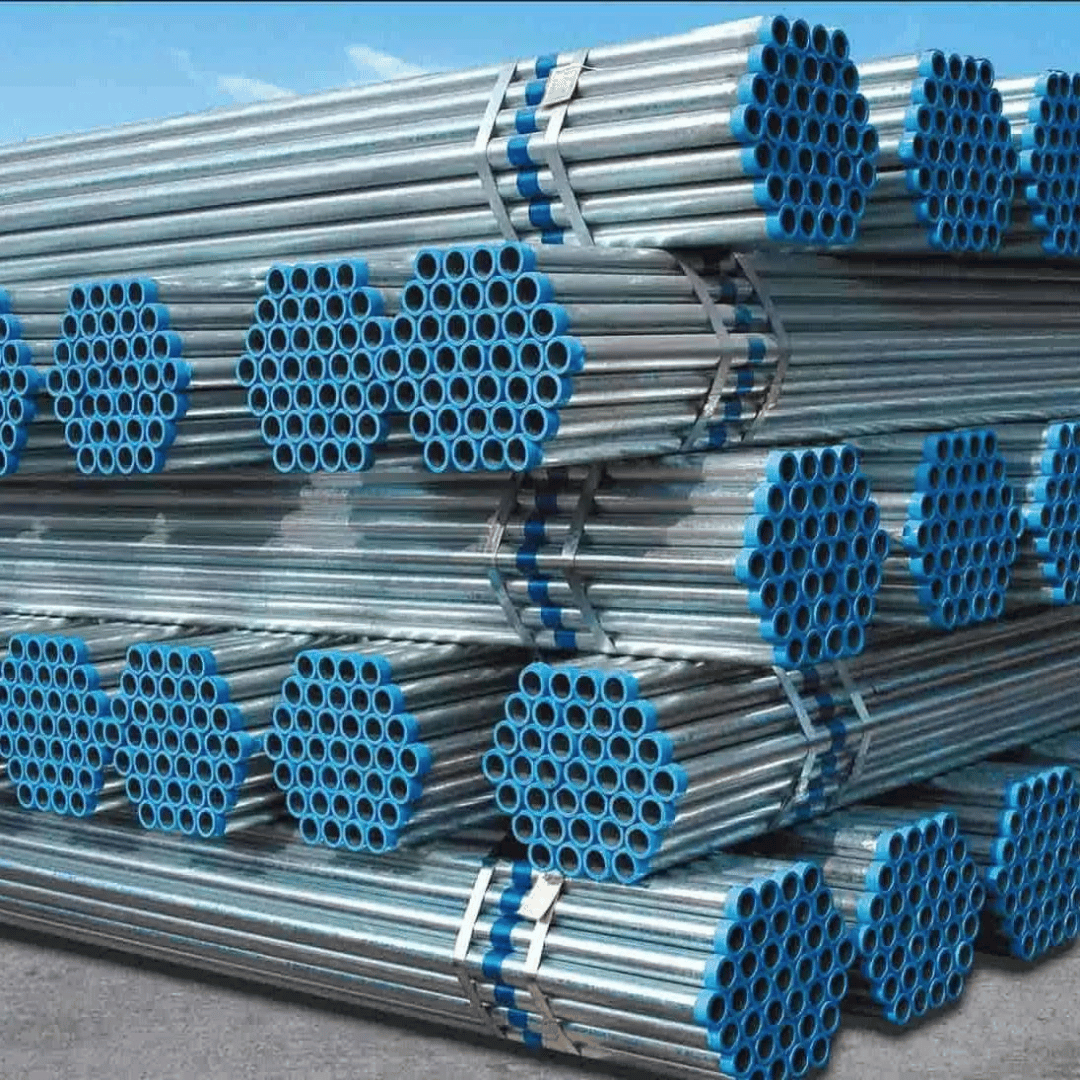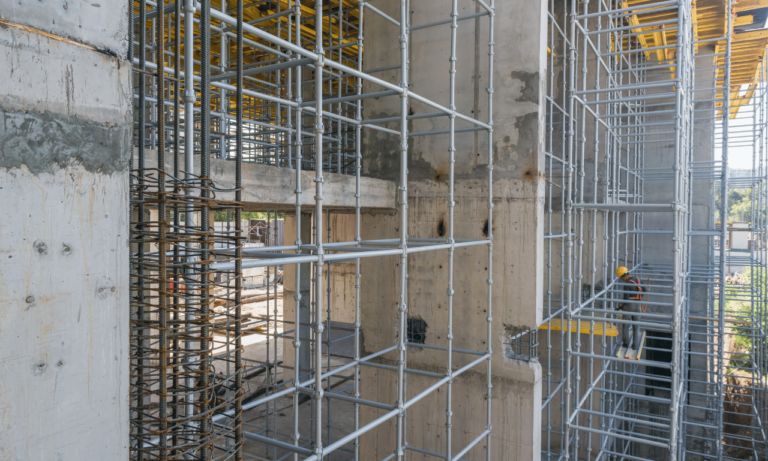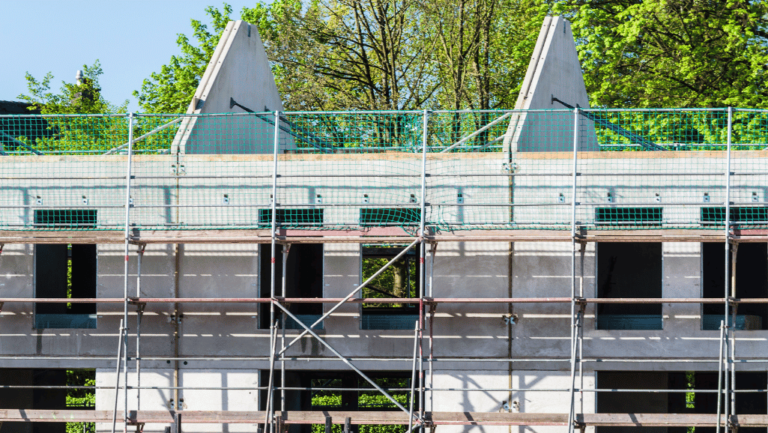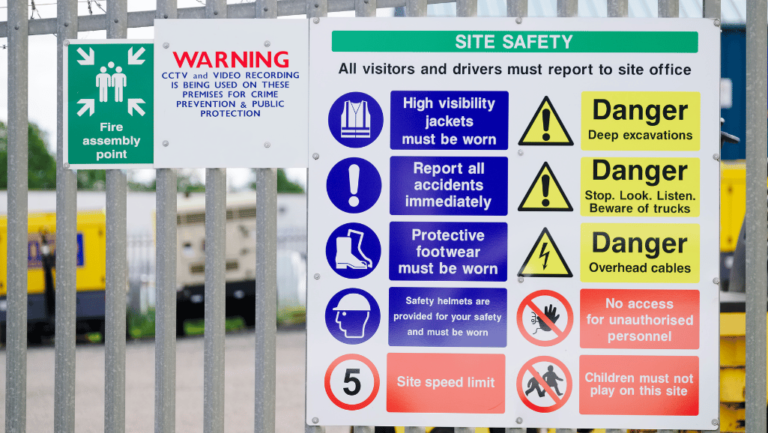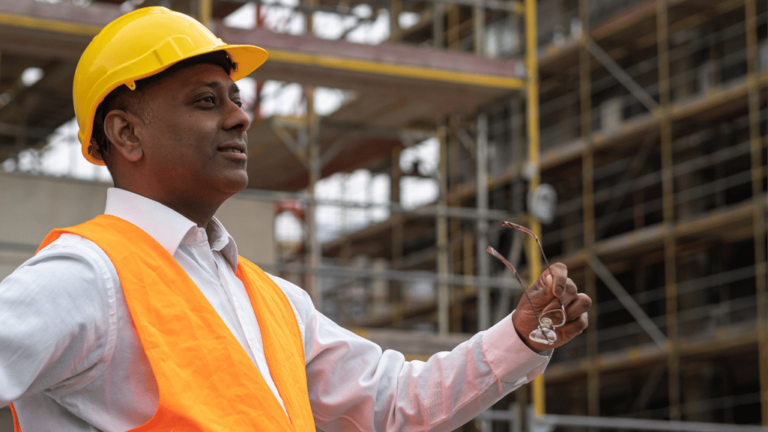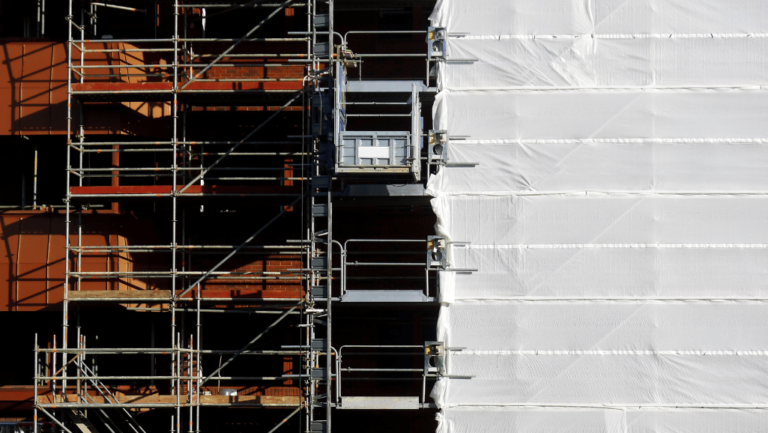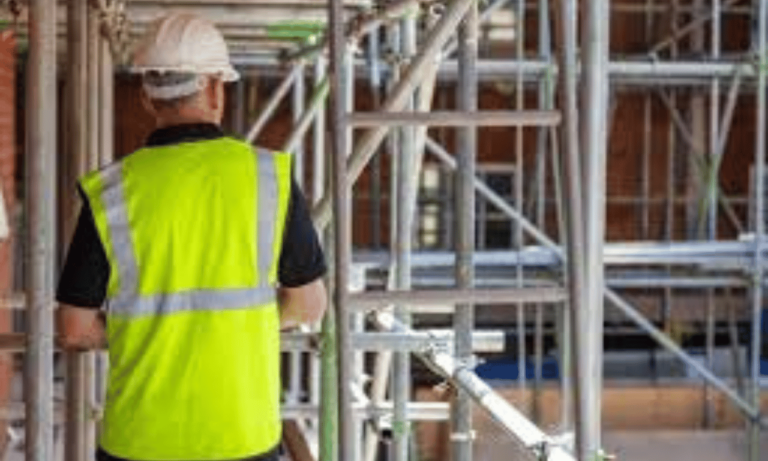Phone:
(+65)8319-0742
When it comes to construction projects, choosing the right scaffolding pipe is crucial for ensuring a safe and reliable structure. The quality of scaffolding pipe is directly linked to the overall durability, stability, and secure scaffold connections of the construction system. This article will explore the importance of using high-quality scaffolding pipe and specifically focus on the advantages of steel scaffolding pipes. Additionally, we will discuss the role of scaffolding clamps in ensuring the safety and efficiency of scaffold assemblies.
Key Takeaways:
- Choosing high-quality scaffolding pipe is essential for construction projects.
- Steel scaffolding pipes offer durability and reliability.
- Integrating scaffolding pipe with compatible systems enhances safety and efficiency.
- Regular maintenance and inspection of scaffolding pipe ensure long-term durability.
- Selecting a reliable scaffolding pipe provider is crucial.
Understanding Scaffolding Pipe Types
When it comes to construction projects, selecting the right type of scaffolding pipe is crucial. In this section, we will explore two popular options: scaffold tubes and galvanized scaffolding pipes. Understanding their unique properties and benefits will help you make an informed choice for your specific project requirements.
Scaffold Tube
Scaffold tubes, also known as scaffold pipes, are hollow steel pipes commonly used in scaffolding structures. They are lightweight yet sturdy, making them easy to transport and assemble on-site. The durability of scaffold tubes ensures they can withstand heavy loads, providing reliable support and stability during construction.
One of the key advantages of scaffold tubes is their versatility. They are available in various lengths and diameters, allowing for customized scaffolding solutions tailored to different construction needs. Additionally, scaffold tubes are compatible with a wide range of scaffold fittings, enabling secure and efficient scaffolding system assembly.
Galvanized Scaffolding Pipe
Galvanized scaffolding pipes are scaffold tubes that have been treated with a protective zinc coating. This coating provides excellent corrosion resistance, protecting the pipes from rust and deterioration over time. Galvanized scaffolding pipes are especially beneficial in outdoor construction environments where exposure to moisture and harsh weather conditions is a concern.
The galvanization process involves immersing the scaffold tubes in molten zinc, creating a durable protective layer that extends their lifespan. This makes galvanized scaffolding pipes ideal for long-term construction projects or projects that require scaffolding systems to be reused multiple times.
Choosing the Right Scaffolding Pipe
When selecting between scaffold tubes and galvanized scaffolding pipes, consider the specific requirements of your construction project. Scaffold tubes offer versatility and strength, while galvanized scaffolding pipes provide enhanced durability and corrosion resistance.
It is recommended to consult with a reputable scaffolding supplier who can guide you in choosing the most suitable scaffolding pipe for your project. They can help you assess factors such as load capacity, environment, and compatibility with scaffold fittings, ensuring a safe and efficient scaffolding system that meets your construction needs.
The Advantages of Steel Scaffolding Pipes
Steel scaffolding pipes offer numerous advantages that make them the preferred choice for construction projects. Their unique characteristics make them versatile, lightweight, and durable, providing essential support for various applications. Let’s explore some key advantages of using steel scaffolding pipes:
1. Lightweight Scaffold Pipe
One of the primary advantages of steel scaffolding pipes is their lightweight nature.
The lightweight design makes the transportation and installation process significantly easier and more efficient. Construction teams can quickly assemble and disassemble the scaffolding system, saving valuable time and resources. Additionally, the lightweight scaffold pipe reduces the structural load on the construction site, making it easier to maneuver and position during construction activities.
2. Strength and Durability
Steel scaffolding pipes are renowned for their exceptional strength and durability
These pipes are specifically engineered to withstand heavy loads and provide robust support for construction applications. The high-quality steel material ensures long-lasting performance, making them ideal for both temporary scaffolding structures and long-term construction projects.
3. Reliability and Safety
When it comes to construction, safety is paramount. Steel scaffolding pipes offer a secure and reliable solution for scaffolding systems.
The impeccable durability and stability of steel pipes ensure a secure working environment for construction workers, minimizing the risk of accidents or structural failures. By incorporating steel scaffolding pipes into construction projects, safety standards are upheld, and potential hazards are effectively mitigated, promoting overall project success.
With the advantages of lightweight design, strength, durability, reliability, and safety, steel scaffolding pipes have become the go-to choice for construction professionals across various industries. These pipes provide the necessary support and stability required for successful construction projects.
Now, let’s delve into the different types of scaffolding systems and explore how scaffold pipe fittings contribute to a comprehensive scaffolding solution.
Exploring Scaffolding Systems
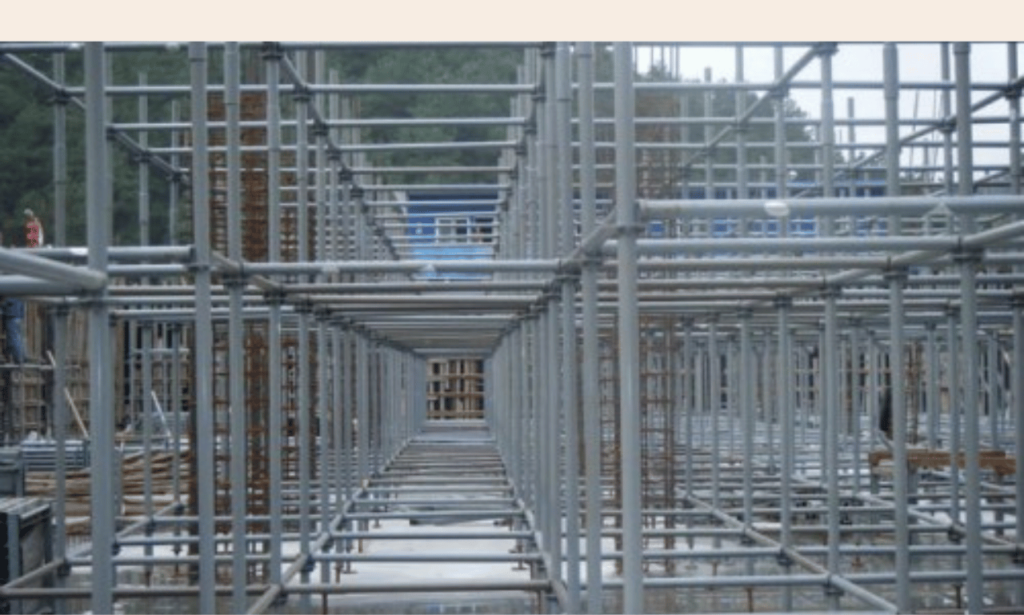
When it comes to scaffolding, the integration of a reliable scaffolding system is crucial for safe and efficient construction projects. The scaffolding system provides a framework that supports and stabilizes the scaffolding structure, ensuring the utmost security for workers and materials. To achieve this, it is essential to understand the role of scaffold pipe fittings and how they contribute to the overall functionality of the system.
Scaffold pipe fittings are the connectors that join scaffolding components together, forming a robust and stable structure. These fittings, made from high-quality materials such as steel or aluminum, ensure the secure alignment of scaffold pipes and other key elements, such as scaffold boards and braces.
By utilizing scaffold pipe fittings, construction professionals can assemble scaffolding systems that cater to the specific requirements of their projects. These fittings come in various shapes and sizes, allowing for flexibility and adaptability while maintaining structural integrity.
The benefits of using a comprehensive scaffolding system, coupled with scaffold pipe fittings, are numerous. First and foremost, it enhances safety on construction sites by providing a stable platform for workers to perform their tasks. The precise alignment and secure connections of scaffold pipe fittings minimize the risk of structural instability, preventing accidents and injuries.
Moreover, a well-designed scaffolding system improves efficiency by offering easy access to different areas of the construction site. With strategically placed scaffold pipe fittings, construction workers can quickly assemble and disassemble scaffolding structures, allowing for smooth progress and timely completion of projects.
Sample Scaffolding System Components
Let’s take a closer look at some common scaffold pipe fittings and their respective functions:
| Scaffold Pipe Fitting | Function |
|---|---|
| Couplers | Connect two scaffold tubes at right angles, forming a secure corner structure |
| Swivel Couplers | Allow scaffold tubes to be connected and adjusted at various angles, offering versatility in construction layouts |
| Sleeves | Provide additional support and reinforcement by connecting scaffold tubes end-to-end |
| Base Plates | Act as a stable foundation for scaffold structures, distributing weight and preventing sinking or tilting |
These are just a few examples of scaffold pipe fittings, each serving a specific purpose to ensure the stability, adaptability, and robustness of the scaffolding system. By understanding the role and benefits of these fittings, construction professionals can make informed decisions when selecting and integrating them into their scaffolding projects.
Safety Considerations in Scaffolding Pipe Selection
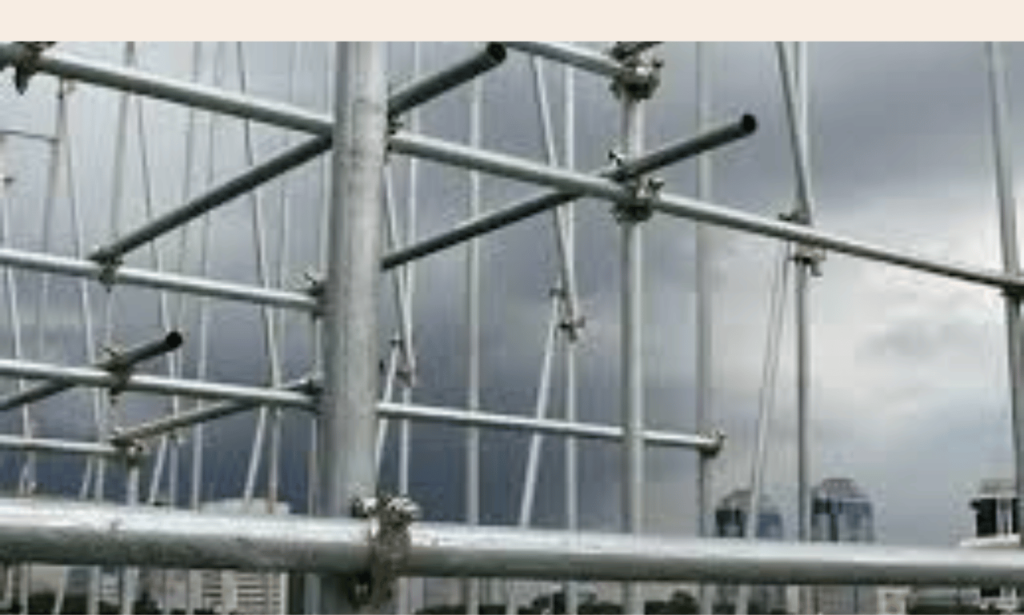
When it comes to construction projects, safety should always be the top priority. This holds true for every aspect of the project, including the selection of scaffolding pipes. Choosing the right construction pipe and scaffold tube is crucial to ensure a secure and stable working environment for construction workers.
One of the primary safety considerations in scaffolding pipe selection is ensuring that the pipes meet industry standards. Construction pipes and scaffold tubes that adhere to these standards undergo rigorous testing and are designed to withstand the demanding conditions of construction sites. By choosing pipes that meet industry standards, you can have confidence in their durability and reliability.
Another safety consideration is the quality of the construction pipe and scaffold tube. It is essential to select pipes made from high-quality materials that can withstand the weight and pressure exerted during construction activities. Poor-quality pipes may be prone to bending, breaking, or collapsing, posing a significant risk to workers’ safety.
Furthermore, it is crucial to consider the load-bearing capacity of the scaffolding pipes. Construction projects vary in scale and complexity, and it is essential to choose pipes that can support the required weight and ensure stability. Understanding the load-bearing capacity of the pipes can help prevent accidents and ensure the overall safety of the scaffolding system.
Regular inspections and maintenance of the scaffolding pipes are also vital for safety. Any signs of damage, such as cracks, corrosion, or deformities, should be addressed promptly to prevent further deterioration and ensure the structural integrity of the scaffolding system. Routine inspections can identify potential hazards and allow for timely repairs or replacements, minimizing risks on the construction site.
Safety Considerations Checklist:
- Choose scaffolding pipes that meet industry standards
- Ensure high-quality construction pipes and scaffold tubes
- Consider the load-bearing capacity of the pipes
- Perform regular inspections of the scaffolding system
- Address any signs of damage promptly
By taking these safety considerations into account during the selection process, construction professionals can create a safer working environment and mitigate risks associated with scaffolding systems. Prioritizing safety not only protects workers but also contributes to the overall success of the construction project.
Maintaining and Inspecting Scaffolding Pipe
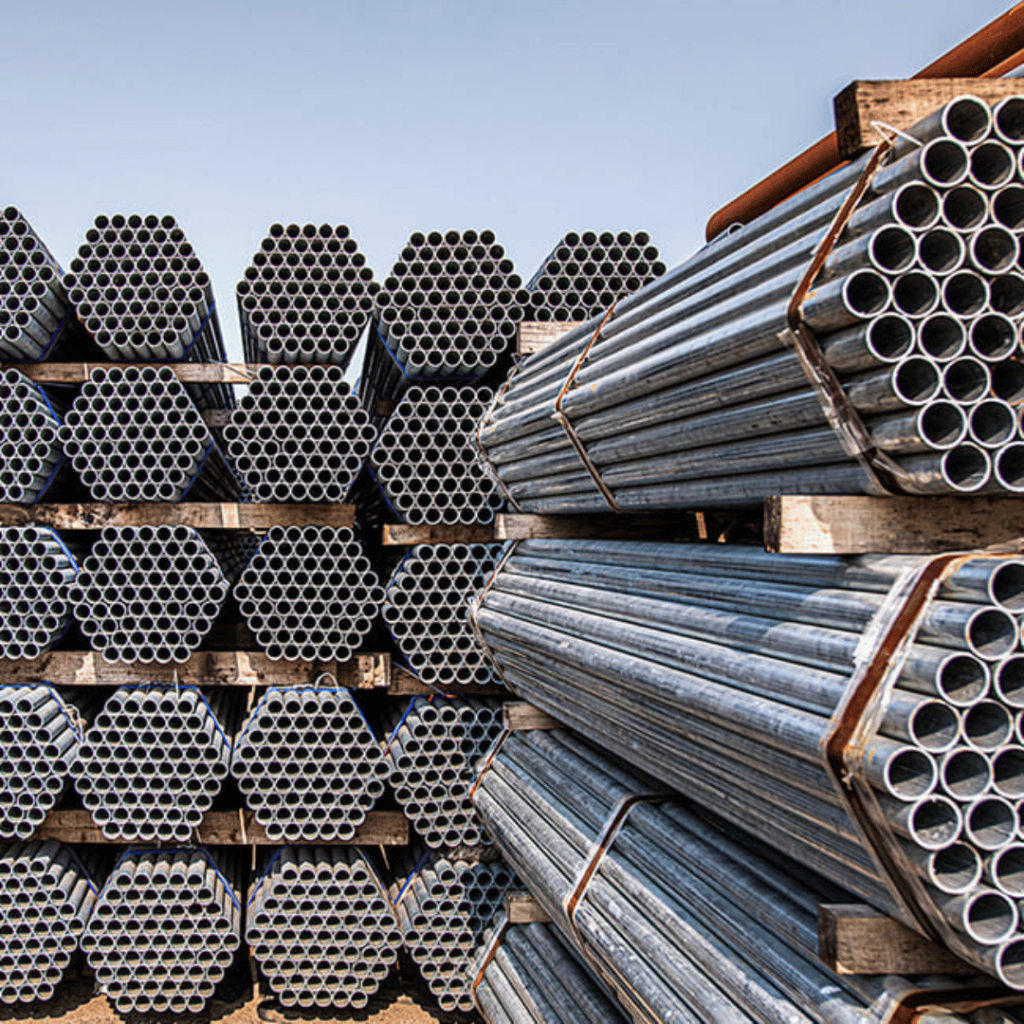
In order to ensure the long-term durability and safety of your scaffolding pipe, regular maintenance and inspection are crucial. By following best practices for upkeep, you can extend the lifespan of your scaffolding system and avoid potential hazards. Here are some valuable insights and maintenance practices to help you keep your scaffolding pipe in optimal condition:
1. Schedule Regular Inspections
Make it a priority to conduct routine inspections of your scaffolding pipe. This will allow you to identify any signs of damage, corrosion, or wear and tear that may compromise the integrity of the system. Inspect for any cracks, dents, or deformations on the pipe, paying close attention to joints, connections, and welds.
2. Clean the Scaffolding Pipe
Regularly clean your scaffolding pipe to remove any dirt, debris, or corrosive substances that may accumulate over time. Use a mild detergent and water solution to gently scrub the surface of the pipe, paying extra attention to areas prone to contamination.
3. Apply Protective Coatings
Consider applying protective coatings, such as paint or anti-corrosion sprays, to your scaffolding pipe. These coatings act as a barrier against corrosion and extend the lifespan of the pipe. Follow the manufacturer’s guidelines for proper application and ensure that the pipe is thoroughly cleaned and dried before applying any coatings.
4. Perform Load Testing
Regularly test the load-bearing capacity of your scaffolding pipe to ensure it can safely support the anticipated loads. Consult the manufacturer’s specifications and guidelines for the maximum load limits and perform load tests accordingly. It is important to conduct these tests periodically, especially when modifications are made to the scaffolding system.
5. Replace Damaged Components
If any part of the scaffolding pipe exhibits significant damage, it is crucial to replace it promptly. Do not compromise the safety and stability of the system by using damaged or weakened components. Consult with a professional if you are unsure about the severity of the damage and the appropriate course of action.
6. Store Properly
By implementing these maintenance practices and prioritizing regular inspections, you can ensure the longevity and effectiveness of your scaffolding pipe investment. Inspecting and maintaining scaffolding pipe is essential for guaranteeing a safe and reliable working environment.
7. Train Your Team
By implementing these maintenance practices and prioritizing regular inspections, you can ensure the longevity and effectiveness of your scaffolding pipe investment. Inspecting and maintaining scaffolding pipe is essential for guaranteeing a safe and reliable working environment.
When it comes to selecting a reliable and reputable scaffolding pipe provider, there are several key factors you should consider. By taking these factors into account, you can ensure that you choose the right supplier for your construction needs. Here are some useful tips to guide you in your decision-making process:
Tips for Choosing the Right Scaffolding Pipe Provider
One of the most important aspects to consider when choosing a scaffolding pipe provider is the quality of their products. Look for suppliers that offer high-quality scaffold pipes made from durable materials such as steel. These pipes should meet industry standards for safety and reliability, ensuring that they can withstand the rigors of construction projects.
1. Product Quality
It’s essential to choose a scaffolding pipe provider with a solid reputation in the industry. Do some research and look for reviews and testimonials from previous customers. A reputable supplier will have a track record of delivering quality products and excellent customer service. Seek out suppliers who have built a name for themselves in the construction industry.
2. Supplier Reputation
It’s essential to choose a scaffolding pipe provider with a solid reputation in the industry. Do some research and look for reviews and testimonials from previous customers. A reputable supplier will have a track record of delivering quality products and excellent customer service. Seek out suppliers who have built a name for themselves in the construction industry.
3. Customer Support
Consider the level of customer support provided by the scaffolding pipe provider. Will they assist you with any inquiries or concerns you may have? Find a supplier that offers responsive and knowledgeable customer support to ensure a smooth and satisfactory experience. This support can be invaluable when it comes to addressing any issues or questions that may arise during your purchase and use of the scaffolding pipes.
4. Pricing and Value
While price shouldn’t be the sole determining factor, it’s still important to consider the pricing and overall value offered by different suppliers. Look for a balance between quality and affordability. Compare prices from multiple providers and evaluate the additional benefits they may offer, such as warranties or discounts for bulk purchases. Remember, it’s crucial to invest in high-quality scaffolding pipes that will provide long-term value and reliability.
5. Delivery and Logistics
Take into account the delivery and logistics capabilities of the scaffolding pipe provider. Will they be able to deliver the products in a timely manner? Do they have adequate inventory to meet your project’s requirements? Consider working with a supplier that has efficient logistics systems in place and can provide reliable delivery to your construction site when needed.
By considering these tips and factors, you can make an informed decision when choosing the right scaffolding pipe provider for your construction project. Remember to prioritize product quality, supplier reputation, customer support, pricing and value, and delivery and logistics capabilities. Selecting the right provider will ensure that you have access to high-quality scaffolding pipes that meet your construction needs.
Scaffold Tubes
Scaffold tubes are the primary components of tube and clamp scaffolding systems. Typically made of high-quality steel, these tubes come in various lengths and diameters to suit different construction needs. Scaffold tubes form the framework of the scaffolding structure, providing a stable and secure platform for workers. Their robust construction ensures they can withstand heavy loads and harsh environmental conditions, making them suitable for both interior and exterior projects. The versatility of scaffold tubes allows for customized scaffolding solutions, ensuring that each project can be tailored to meet specific requirements.
Clamp Scaffolding
Clamp scaffolding is a type of scaffolding system that uses clamps to connect scaffold tubes together. This method is popular due to its ease of use and flexibility. Clamp scaffolding can be quickly assembled and disassembled, making it ideal for projects that require frequent adjustments. It is widely used in various construction projects, including building maintenance, repair, and renovation. The ability to create complex scaffolding structures with simple components makes clamp scaffolding a versatile and cost-effective solution for many construction needs.
Types of Clamps
There are several types of clamps used in clamp scaffolding, each designed to provide a secure and stable connection between scaffold tubes. These include:
Right Angle Clamps: Used to connect two scaffold tubes at a 90-degree angle, ensuring a strong and stable joint.
Swivel Clamps: Allow for the connection of two scaffold tubes at any angle, providing flexibility in the scaffolding design.
I-Bolt Clamps: Used to connect scaffold tubes to other components, such as scaffolding ladders and stairways, enhancing the functionality of the scaffolding system.
Tube Clamps: Designed to connect scaffold tubes to other tubes or components, ensuring a secure and stable structure.
Angle Clamps: Used to connect scaffold tubes at angles other than 90 degrees, allowing for more complex scaffolding configurations.
These clamps are essential for creating a safe and reliable scaffolding structure. By providing secure connections between scaffold tubes, they ensure the stability and integrity of the scaffolding system, allowing workers to perform their tasks safely and efficiently.
Conclusion
In conclusion, the use of high-quality scaffolding pipe is essential for robust and reliable construction support. By opting for durable steel scaffolding pipes and integrating them into a comprehensive scaffolding system, construction projects can ensure the utmost safety and efficiency. Steel scaffolding pipes offer numerous advantages such as lightweight design and exceptional strength, making them the ideal choice for construction applications.
When selecting a scaffolding pipe provider, it is crucial to prioritize product quality and supplier reputation. Choose a trusted supplier that offers premium scaffolding pipes to guarantee long-lasting performance and durability
Maintaining and inspecting scaffolding pipes regularly is equally important. Conduct routine checks and follow recommended maintenance practices to prolong the life of your scaffolding pipe investment. By doing so, you can ensure the safety of construction workers and the success of your projects.
FAQ
What is a scaffolding pipe?
A scaffolding pipe is a tubular component used to construct scaffolding systems. It provides support and stability in construction projects, acting as a sturdy framework for workers and materials.
What are the different types of scaffolding pipes?
There are various types of scaffolding pipes available, including scaffold tubes and galvanized scaffolding pipes. Scaffold tubes are lightweight and easy to handle, while galvanized scaffolding pipes have a protective zinc coating that enhances corrosion resistance.
What are the advantages of using steel scaffolding pipes?
Steel scaffolding pipes offer several advantages. They are lightweight, making transportation and assembly easier. Additionally, they are strong and durable, ensuring reliable support for construction applications.
How important is the integration of scaffolding pipe with scaffolding systems?
Integrating scaffolding pipe with compatible scaffolding systems is crucial for safety and efficiency. Scaffold pipe fittings play a key role in connecting and stabilizing the structure. A comprehensive scaffolding system ensures proper load distribution and stability during construction activities.
What should be considered when selecting scaffolding pipes?
Safety should be the primary consideration when choosing scaffolding pipes. It is important to select construction pipes and scaffold tubes that meet industry standards, ensuring a secure and stable working environment for construction workers.
How should scaffolding pipes be maintained and inspected?
Regular maintenance and inspection of scaffolding pipes are essential. This involves conducting frequent checks for any signs of damage, corrosion, or weakness. Cleaning, lubricating, and repairing scaffolding pipes when necessary helps ensure their long-term durability and safety.
How can I choose the right scaffolding pipe provider?
When selecting a scaffolding pipe provider, consider factors such as product quality, supplier reputation, and customer support. Look for a reliable and reputable provider that offers high-quality scaffolding pipes and comprehensive customer service to meet your construction needs.
What is the importance of using high-quality scaffolding pipe?
High-quality scaffolding pipe ensures robust and reliable support in construction projects. Opting for durable steel scaffolding pipes, coupled with a comprehensive scaffolding system, guarantees the utmost safety and efficiency.

